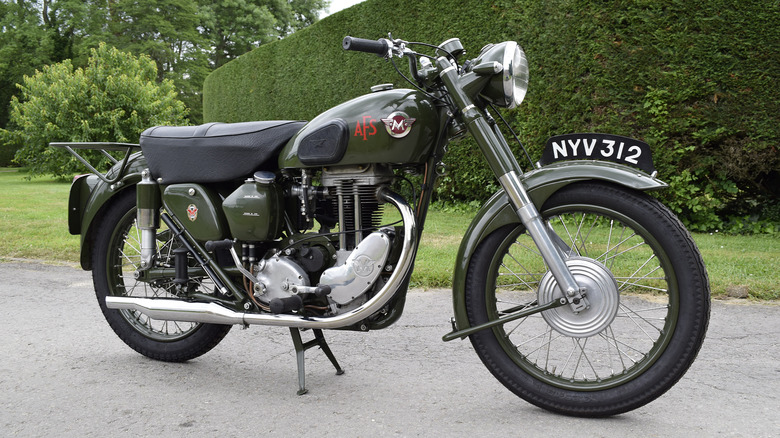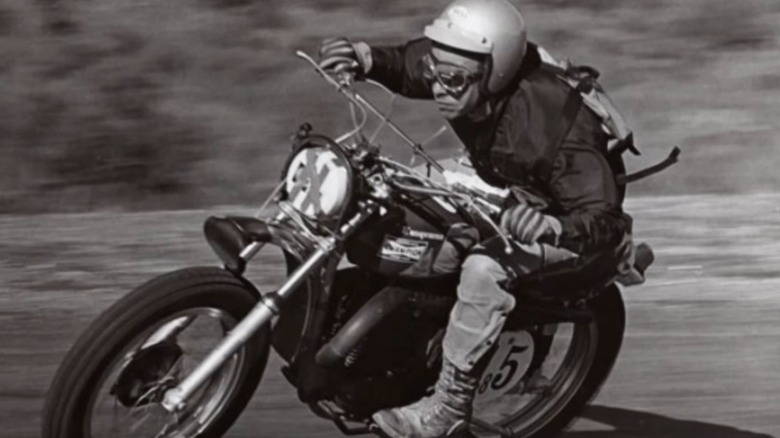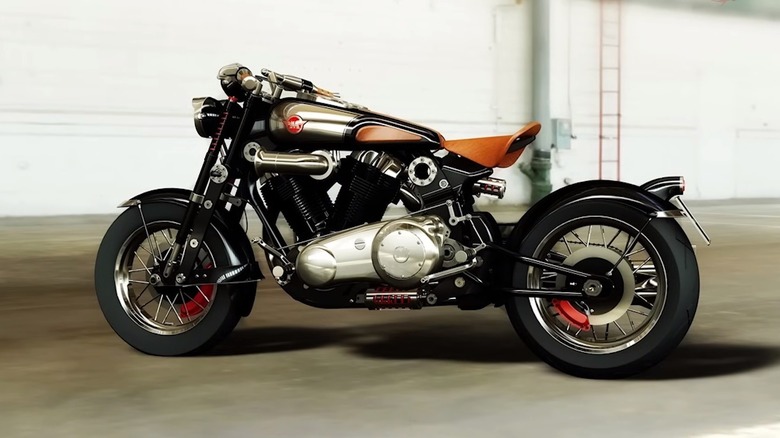What Ever Happened To Matchless Motorcycles?
Remembering classic and legendary British motorcycle makers, Triumph might come to mind. While this is undoubtedly an iconic U.K.-based manufacturer with a storied history, you'd be remiss not to recall another giant of motorcycle greatness: Matchless. Starting in 1899, Henry Herbert Collier and sons Harry and Charlie began making bicycles in London. However, the transition to motorcycles wouldn't take long as the Collier brothers crafted their first in 1901. While very basic by today's standards, this model would kick off a series of innovative and quality-built motorcycles lasting for decades to come.
Motorcycle racing was one of the burgeoning pastimes of the early 20th Century, and the Collier brothers were directly involved. For example, Charlie took first place in the inaugural Isle of Man TT during the first event to use single-cylinder engines in 1907. His brother also took the top podium two years later, cementing the Colliers as not only savvy businessmen but also talented racers. With a strong foundation, a good reputation on the racing circuit, and some of the most memorable models like the Silver Arrow, G12, G80, and G3, what ultimately happened to the brand? Like BSA Motorcycles with its own exciting story, Matchless certainly has a fascinating history.
Industry upheaval from Japanese imports
Matchless experienced its heyday following World War II and gained further notoriety from celebrities like James Dean and Steve McQueen, who proudly showed off the brand's motorcycles in their collection. However, something happened in the 1960s that changed the industry landscape forever: Japanese imports. Before the Second World War, virtually no one knew(outside of Japan) the existence of Japanese motorcycle manufacturing and certainly not the breadth of it. According to Cycle World, by 1967, upwards of 3 million bikes were coming out of Japanese factories, and more importantly, 1 million were destined for export.
Why were Japanese motorcycles so popular? A combination of technological innovation and several victories on the racetrack. Big names like Honda rose to fame as forward-thinking engineers like Shoichiro Irimajiri. Irimajiri, according to Motorsport Magazine, developed bikes with "high revs, low friction, lightweight materials, compact design, and very clever combustion, using very shallow valve angles with almost vertical intake ports." Sadly, due to declining sales and market domination from Japanese imports, Matchless closed down in 1966. If you can't get your hands on a Matchless from decades past, several classic motorcycles still make great resto-projects.
Matchless came back, sort of...
Even though the Matchless brand went belly up in the late '60s, it did make two more appearances, one in the late '80s and one more recently in 2014. In 1987, a new Matchless G80 launched as a result of efforts by an entrepreneur named Les Harris. For this reason, this particular bike is often referred to as a "Harris Matchless G80." Unfortunately, although the G80 captured the classic Matchless look, it was considered too expensive and the late 80s were trending toward sport bikes. So, the "Harris Matchless G80" faded away by the early '90s.
Fast forward to 2012 and ownership of the brand shifted to an Italian businessman named Franco Malenotti. He infused more energy into the forgotten brand by crafting the Matchless Model X Reloaded as a tribute to the original Model X from the 1920s. This bike is equipped with a V-twin motor and plenty of design elements inspired by classic Matchless designs. It was produced until 2017, and further Matchless endeavors have failed to manifest since. Malenotti passed on his Matchless London brand to his son, Michele Malenotti, who sadly passed away recently as a result of a vehicle accident.
So, the fate of Matchless Motorcycles is currently unknown, but fans of this celebrated brand hope to see a resurgence soon. While Matchless was a favorite of British troops during World War II, it wasn't the only example of the most iconic military motorcycles of all time.


